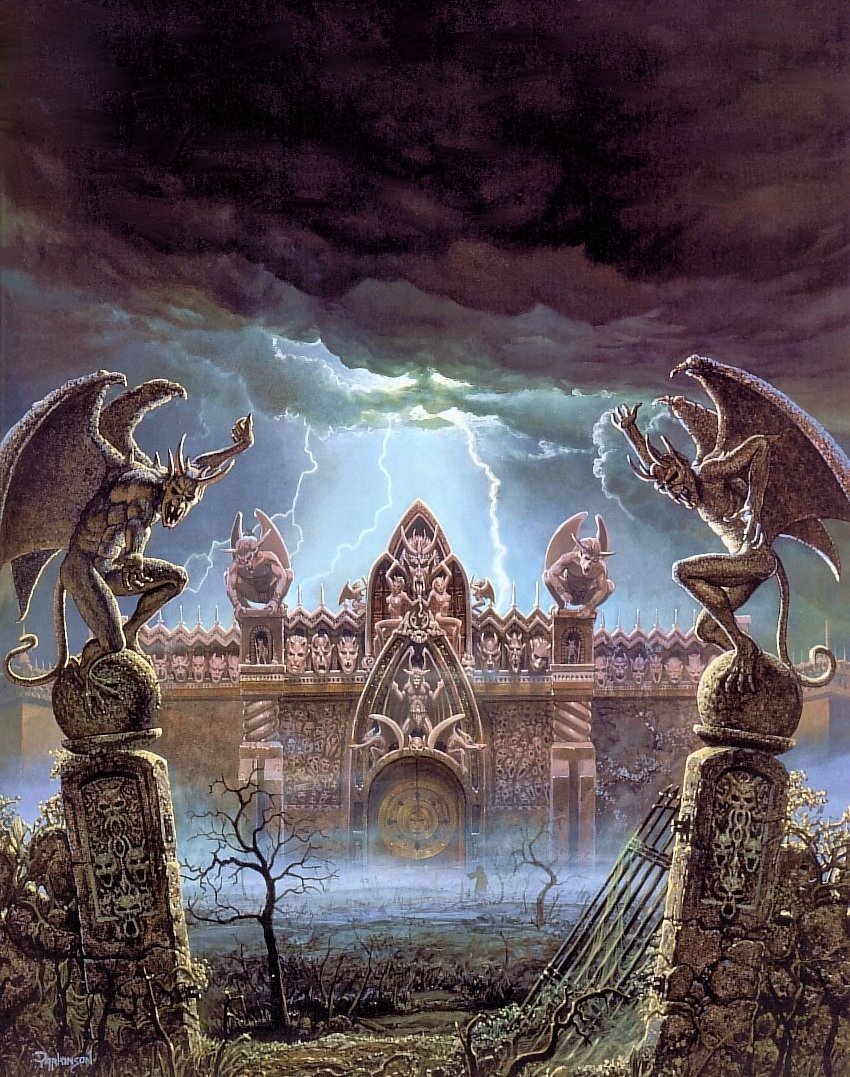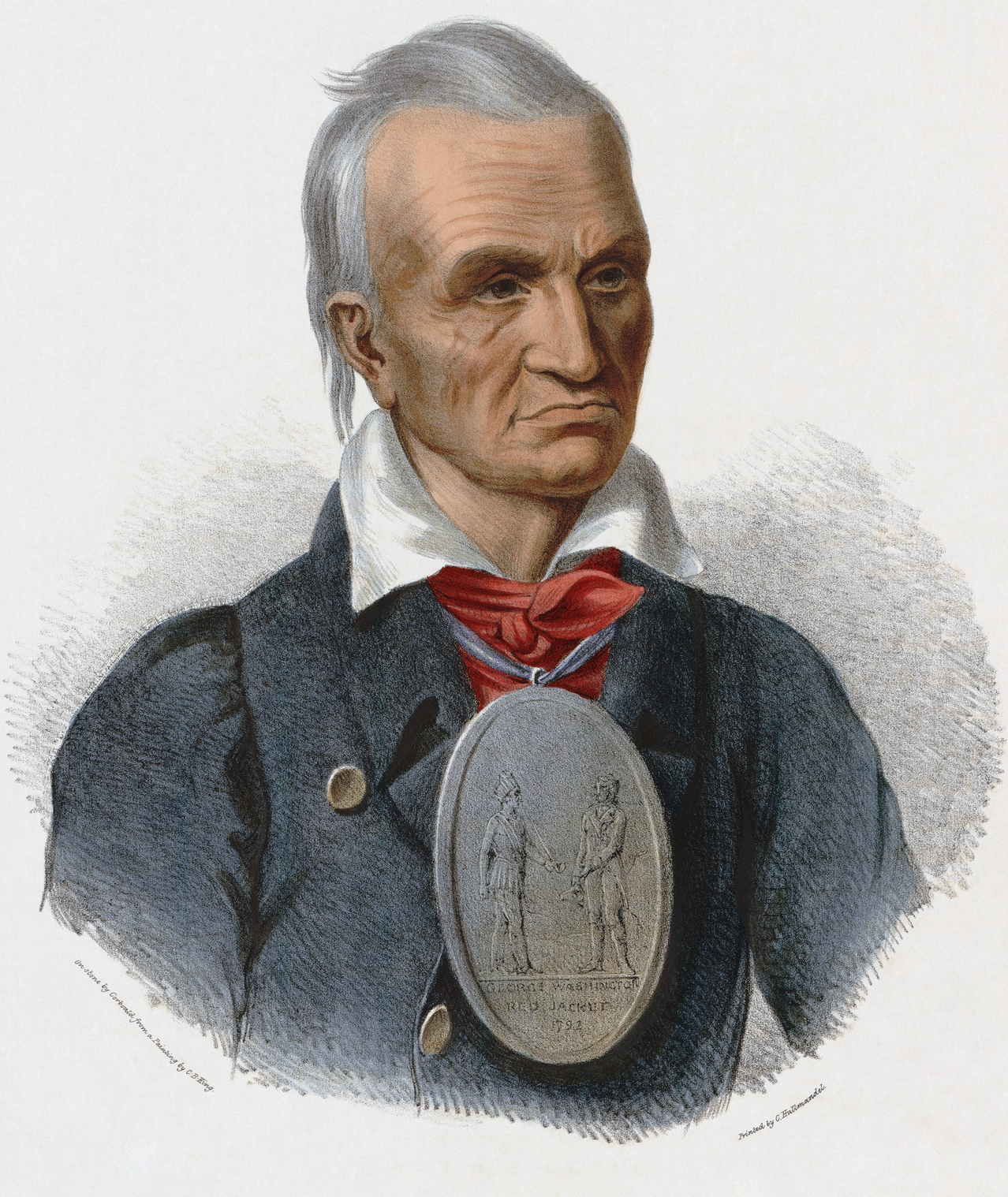The Village of Hommlet
The Village of Hommlet–Hommlet as it is commonly called–was situated in the central part of the Flanaess, that portion of eastern Oerik Continent which was known and “civilized”. The village (actualy hamlet-sized, though local parlance distinguised it with the term “village”) was located some 25 or so leagues southeast of the city of Verbobonc, on the fringe of the territory controlled by its noble Lord, the Viscount of Verbobonc. Far to the north is the mighty Velverdyva River, along whose south bank runs “the Low Road”. Many days’ travel along the eastern road, on the shores of the Lake of Unknown Depths (Nyr Dyv), is the great walled city of Dyvers, the village of Sobanwych about halfway along that route (called, not surprisingly, “the High Road”). Below that to the southeast and east are miles and miles of forest, the Gnarley, beyond which is the Wild Coast, Wooly Bay, and the Sea of Gearnat. The road south of Hommlet forks a league or so beyond the little community, one (colloquially known as “the Cart Path) meandering off through the forest towards the Wild Coast, the other rolling through the lower Kron Hills to the village of Ostverk and then eventually turning southwards again into the elven Kingdom of Celene. The western road out of Hommlet lead into the very heart of gnomish highlands, passing through Greenway Valley about a day’s travel distant and going onwards to the Lortmil Mountains far beyond.

Hommlet grew from a farm or two, a rest house, and a smithy. The roads brought sufficient numbers of travellers and merchant wagons to attract tradesmen and artisans to serve those passing through. The rest house became a thriving inn, a wheel and wain-wright settled in the thorp, and more farmers and herdsmen followed, for grain was needed for the passing animals, and meat was in demand for the innfolk. Prosperity was great, for the titular duke of the Duchy of Aerik was mild and taxed but little. Trade was good, and the land was untroubled by war or outlaws or ravaging beasts. The area was TOO free, too beautiful, too bountiful, at least in the eyes of some. Whether the evil came west from Dyvers as is claimed by one faction, or crept up out of the forestlands bordering the Wild Coast as others assert, come it did. At first it was only a few thieves and an odd group of bandits molesting the merchant caravans. Then came small bands of humanoids–kobolds or goblins–raiding the flocks and herds. Local duchy militia and foresters of the Dolmenwood apparently checked, but but could not stop, the spread of outlawry and evil.
A collection of hovels and their slovenly inhabitants formed the nucleus for the troubles which were to increase. A wicked priest established a small chapel at this point. The folk of Hommlet tended to ignore Nulb, even though it was but 6 miles distant to the north and east. The out-of-the-way position was ideal for the fell purposes planned for this settlement, as was its position on a small river, Imeryd’s Run, flowing north as it does into the Velverdyva. The thickets and marshes around Nulb became the lair and hiding place for bandits, brigands, and all sorts of evil men and monsters alike. The chapel grew into a stone temple as its faithful brought in their ill-gotten tithes. Good folk were robbed, pillaged, enslaved, or worse. In but three years a grim and foreboding fortress sourrounded the evil place, and swarms of creatures worshipped and worked their wickedness there. The servants of the Temple of Elemental Evil made Hommlet and the lands for leagues around a mockery of freedom and beauty. Commerce ceased, crops withered, pestilence was abroad. But the leaders of this cancer were full of bubris, and in their overweaning pride sought to overthrow the good realms to the north who were coming to the rescue of the land being crushed under the tyranny wrought by the evil temple. A great battle was fought to the north of Hommlet, east of the mighty Velverdyva, and when villagers saw streams of ochre-robed men and humanoids fleeing south and west through their communicty, there was great rejoicing, for they knew that the murderous oppressors had been defeated and driven from the field in panic and rout.

So great was the slaughter, so complete the victory of good, that the walled stronghold of the Temple of Elemental Evil fell within a fortnight, despite the aid of a terrible demon. The place was ruined and sealed against a further return of such abominations by powerful blessings and magic. Life quickly returned to a semblance of what it had been before the rise of the temple, and in the decade since, the village and surrounding countryside have in fact become more rich and prosperous than ever before. A monstrous troll which plagued the place for a time was hunted down by a body of passing adventurers. With its ashes, these fellows returned a goodly fortune as well, leaving a portion with the villagers to repay them for their losses before going elsewhere to seek their fortunes. Other adventurers, knowing of the evil that had once resided in the area, came to seek out similar caches, and not a few did locate remote lairs and find wealth–just as some never returned at all. After some five years, adventurers stopped coming to the area, as it seemed that no mosters were left to slay, no evil existed here to be stamped out. For four years thereafter, this seemed true, but then bandits began to ride the roads again–not frequently, but to some effect. This seemed all too familiar somehow to the good folk of Hommlet, so they sent word the the Viscount that wicked forces might still lurk thereabouts. This information has been spread throughout the countryside, and the news has attracted outsiders to the village once again. Who and what these foreigners are, no one can be quite sure, although all claim to be bent on slaying monsters and bringing peach and security to Hommlet, for deeds speak more loudly than words, and lies cloak the true purposes of the malevolent.
